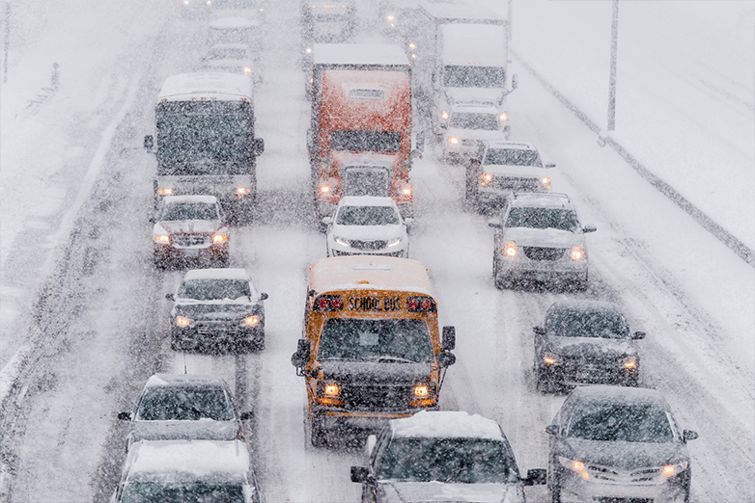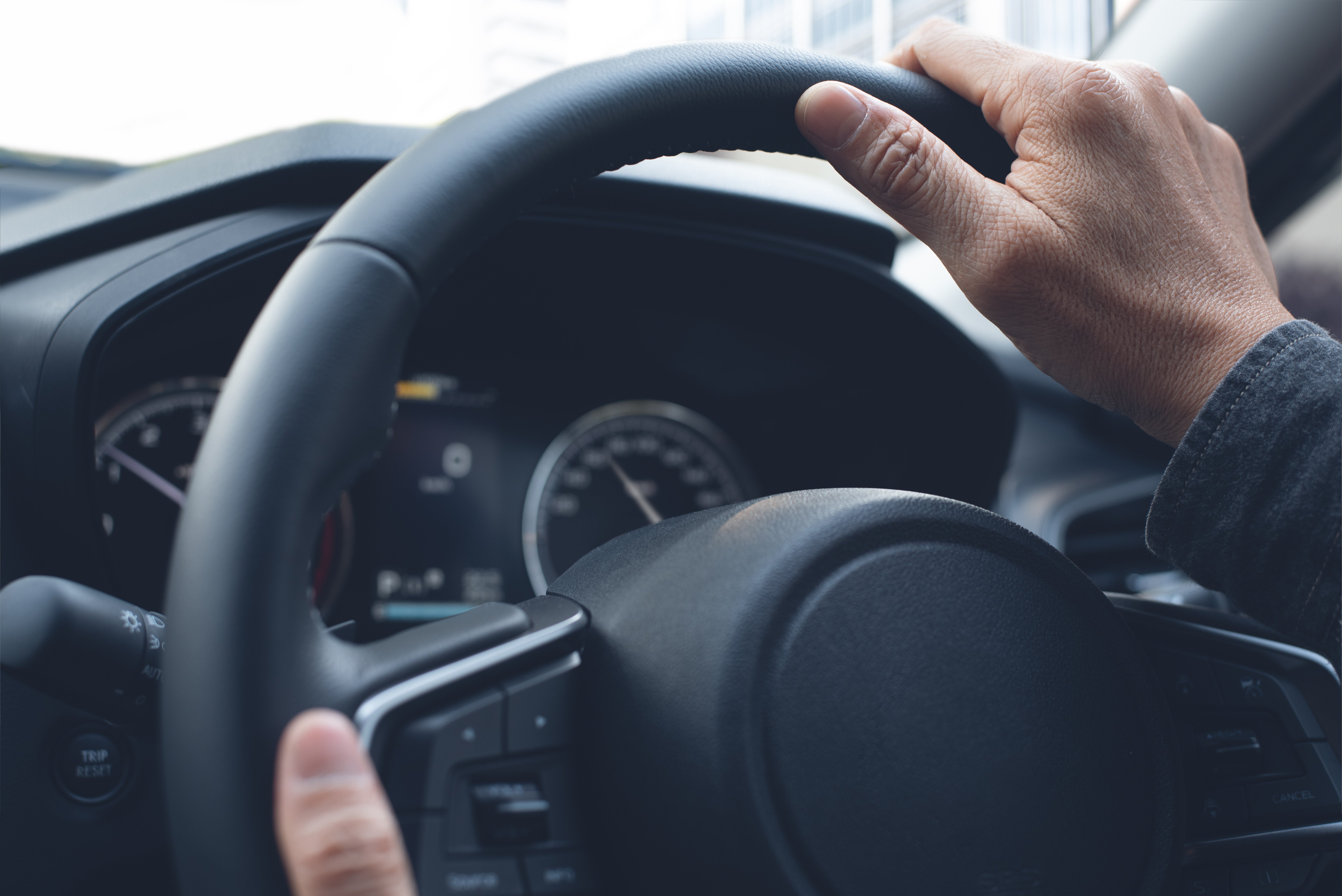
On average, nearly half a million people are injured in weather-related crashes on roadways every year and almost 6,000 are killed.
Bad weather causes the rate of traffic collisions to dramatically increase because drivers fail to adjust their driving habits with the changing weather conditions.
The truth is, bad weather like rain, snow, ice, and fog have a serious impact on roadways and can turn deadly fast. You can’t count on your vehicle, the roadway, or even other drivers to behave the way you expect.
Visibility and traction — two of the most important elements of safe driving — are significantly decreased with snow and icy roads, which can leave drivers “driving blind.”
Winter weather driving is dangerous, but many traffic collisions are preventable if drivers are prepared. The first step happens before you even start your engine.
Prepare Your Vehicle for Winter Weather
Though there is nothing you can do about bad weather, there are some steps you can take to safeguard yourself and your vehicle.
First, set yourself up for good visibility by regularly replacing your wiper blades or installing special winter blades. Always keep your headlights and mirrors clean, and make sure your defroster is working well. Make sure to clear off all the snow from your vehicle before getting on the road.
Make sure your tires are properly inflated and have good tread and that your brake pads are in good shape. You’ll also want to make sure you have a full tank of gas.
It helps to have an emergency kit with snow chains, blankets, water, and roadside flares in case you get stranded or have an emergency. Listen to the local weather station, eliminate distractions, buckle up, and take your time.
When your vehicle is prepared, what do you do once you get on the road? You use The Smith5Keys®. These pointers can help fleet drivers adapt their driving habits to inclement weather conditions, as well as protect themselves from other drivers.
#1: Aim High In Steering®
Visibility is essential to safe driving. More than 90% of the information you need to safely operate your vehicle comes from eyesight. You should always look at least 15 seconds or more up the road so that you can make early observations about upcoming driving conditions.
By being able to see what’s happening up in front of you, you can get a head start on potential problems and have enough time to safely react.
If you see drivers ahead having problems like swerving, braking unexpectedly, or hydroplaning, for example, you have 15 seconds of eye lead time to look ahead, assess the road and driving conditions, and get a plan together to safely approach what's ahead of you.
#2: Get The Big picture®
When driving conditions deteriorate, anticipate dangerous situations and maintain complete awareness of your surroundings. Retain the proper following distance so that you are aware of the situation all around your vehicle. As you're driving, stay focused on relevant details. Reject any information that's irrelevant to safe driving.
Following distance is one of the most important elements of safe driving. Put at least four seconds between you and the vehicle you are following during good weather. In treacherous weather, you should increase following distance to give yourself enough visibility and space to make safe decisions and avoid crashes.
#3: Keep Your Eyes Moving®
Be careful not to fixate on the road. Check your mirrors every five to eight seconds and scan the area ahead and to the sides of your vehicle. When your eyes are moving, you are getting the most accurate information. When you're not scanning your mirrors, your guard is down.
You should also keep your wiper blades fresh, windows and mirrors clean, and clear out all unnecessary distractions inside your car so that you can focus on the road.
#4: Leave Yourself An Out®
Most drivers travel in packs, and rear-end crashes are the most common type of crash during bad weather. Create a space cushion around your vehicle and avoid tailgating. Remember that when streets are wet, stopping distances can double or even triple.
Always maintain control over the vehicle by driving at a slower speed and avoiding sudden braking — especially when visibility is poor. And when you do have to turn or brake, do it early so that drivers behind you have plenty of time to slow down.
If you start to hydroplane, don’t panic and definitely don’t slam on the brakes. Also, don't jerk your steering wheel in one direction or the other. Instead, allow your vehicle to continue moving in the same direction — toward an open area, if possible — and coast through the skid while gently braking.
Most hydroplaning skids last for just a few seconds before you regain traction, so oftentimes, waiting it out is the best way to respond.
#5: Make Sure They Can See You®
Intersections are always more dangerous during bad weather, so be alert and always be on the lookout for potential hazards. Use your headlights when visibility or traction might be compromised, and use turn signals and brake lights early so you can communicate with other drivers and give them time to react.
Avoid driving in other drivers’ blind spots and always give yourself plenty of space when you change lanes.
The very best strategy for winter weather driving is to avoid it, but that isn’t always an option. If getting off the roadway during extreme conditions just isn’t possible, use these practical and advanced driving tips to prevent crashes and stay safe. Be proactive and take control. A little knowledge can make a big difference!










